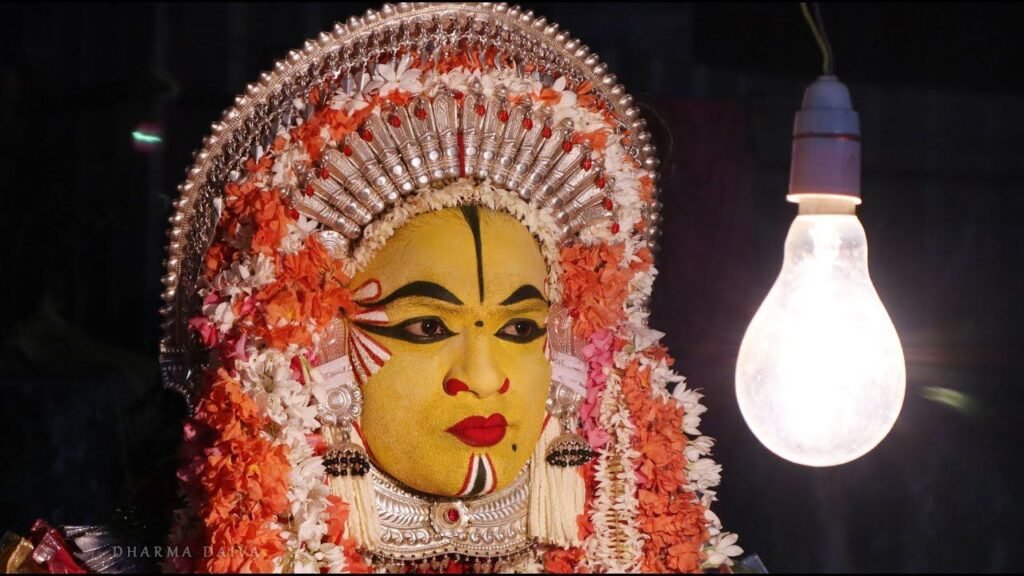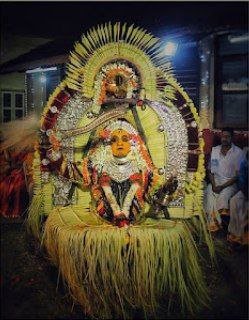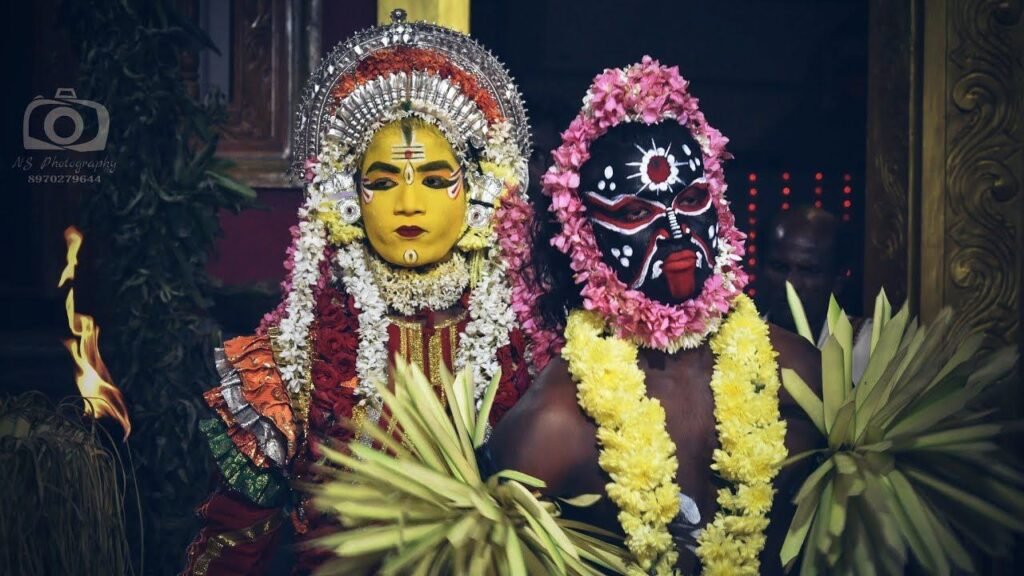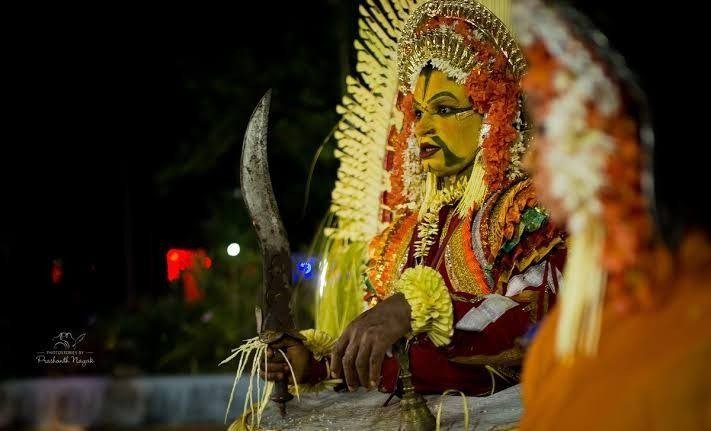
Panjurli, a term resonating through the vibrant land of India known as Tulu Nadu (Udupi, Mangalore, and Kasaragod) holds a mystique that captivates the hearts of locals. This article explores the divine essence and cultural implications of Panjurli, taking the reader on a journey to understand its spiritual significance.
Contents
Panjurli: Unveiling the Divine
Panjurli Daiva
a boar spirit that is worshipped to keep wild boars at bay and safeguard crops. In the celestial garden of Lord Shiva, a wild boar met its demise, as per Tulu mythology. Goddess Parvati adopted the boar’s progeny. As he grew older, the young boar turned destructive, tearing up the trees and plants in Lord Shiva’s garden. This infuriated Lord Shiva, who then decided to murder him. But Goddess Parvati stood up for the boar and begged her husband to forgive him. Hence, rather than killing him, Lord Shiva sent the boar to Earth as his gana, gave him the responsibility of defending the populace, and promised him that the people would revere him as a god of protection.
This specific boar evolved into Panjurli Daiva, a Bhoota (Divine Spirit). However, because Varaha is a boar incarnation of Lord Vishnu, some people combine Panjurli with him. Because of his status as a Rudransh, he is also referred to as Shiva Shambhootha or someone with Mahadev’s abilities. Along with Bermer Daiva (Brahma), Panjurli Daiva is one of the oldest daivas worshipped throughout Tulunad, having been worshipped since 700–800 BCE. Panjurli worship: According to scientific theory, boars ruined crops, so farmers began to worship Panjurli, the king of the boars, in the demand that they would protect their crops.
Panjurli God: Guardian of the Village

The Tulunadu worship the Panjurli god as both the town’s local deity and a Daiva of their family. Some families in Tulunadu worship Panjurli in the home of their ancestors. Every year, they have kola or tambila, which brings the entire family together. Additionally, some local towns in Tulunadu hold annual kolas honoring the Panjurli god as a town protector. On these occasions, all of the town’s residents gather to worship Daiva Panjurli.
Tambila refers to the ritual that a family must perform if they did not perform kola. There won’t be any music or kola-style dancing when the family members assemble for the Tambila ritual to worship the daivas. They only offer Daiva prayers.
Panjurli and Guliga

In this article, I’ll tell the story of Daiva Guliga. Before that, a brief history of Guliga daiwa, why he came to Tulunadu and the battles of Guliga and Panjurli. Why is Guliga known as Kshetra Palaka, and is Guliga created by Shiva or Goddess Lakshmi? The reason for Guliga’s multiple names.
Who is Daiva Guliga?
Once upon a time, according to Pardana, one day at Kailasa, Parvati offered a plate of ashes to Shiva. During the offering of the plate of ashes to Shiva, he received a piece of black stone from that plate. Shiva threw the stone away, and from that stone, a huge black figure was born. Shiva gave him the name Guliga and sent him to Vaikunta to meet Lord Vishnu.
Vishnu told him that the reason for his birth was to maintain justice in the land. He would take birth as the 24th son of my worshiper Nellaulla Sanke and Galibardhara.
Guliga and Panjurli battle
One day, Daiva Guliga reached Tulunadu with Devi Lakshmi, and in Tulunadu, he met Daiva Panjurli. While talking with Panjurli, due to some arguments between them, they started to fight each other. Devi Lakshmi observed this and intervened, ordering them to consider each other as brothers from that moment on. She instructed that wherever Panjurli goes, Guliga should be with him. This is the reason why, in some temples dedicated to Panjurli, worship is also offered to Guliga.
Why is Guliga known as Kshetra Palaka?
The people of Tulu Nadu worship Guliga as a guardian of the land, cattle, and crops. This is the reason why Guliga is referred to as the Kshetra Palaka, meaning the Protector.
Panjurli kola

Young boys from the Pambada, Parava, and Nalike castes participate in rituals that their relatives perform, and they assist with tasks like holding the mirror while the Kola dancer applies makeup and shredding coconut leaves for the dancer’s garment. They watch their relatives perform and attempt to imitate them to learn the art of performance. Being able to emulate the performances of their kin is just one requirement for becoming a successful Kola dancer; another is having the Daiva’s aptitude. The Kola dancer must abide by a few rules to prepare his body for Daiva’s possession. This might involve avoiding drinking alcohol and becoming a vegetarian. For a brief moment, the Kola dancer experiences the sudden spirit possession; however, shortly after, he is infused with the Daiva’s energy, helping him to behave as Daiva throughout the ritual.
FAQ
Q: Who is Panjurli?
A: Panjurli is a deity worshipped by the people of Tulunadu as a protector of their land and crops.
Q: Is Panjurli Daiva Kola only in specific regions?
A: Yes, Panjurli Kola is held in the Mangalore, Udupi, and Kasargod regions.
Q: Is Panjurli kola performed at specific times of the year?
A: Panjurli kola is often linked to agricultural cycles, with specific times aligning with planting and harvesting seasons.

Thankyou for the information.
Your Welcome sanju.
Thanks for the info. Is there a specific way to pray to varte panjurli in our daily prayers especially if you are away from home country.
Hello Sayithya,
if you away from your home country. Just remember them in your thoughts.